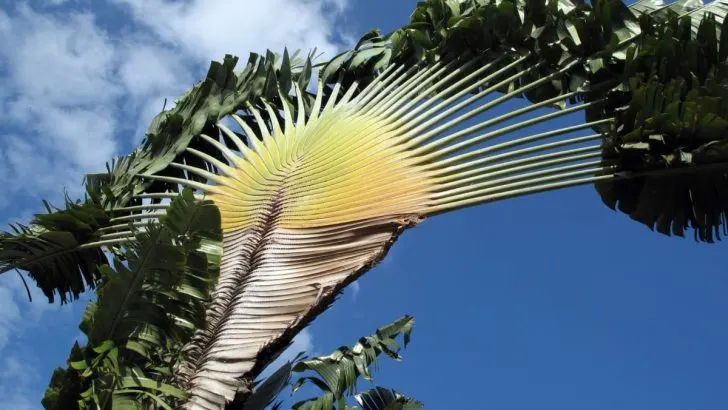Have you heard of a story about a lost traveler and a travelers palm? If you haven’t, today is the day you’ll find out all about it.
Besides bringing the care guide of traveler’s palms, and growing habits of traveler’s tree, we bring an amazing story.
Why does a traveler’s palm have this name? What makes it so special and wanted in the garden all around the world?
The story is definitely one of the good reasons. Other reasons are: this palm is incredibly simple, and beautiful and it is a true palm.
When grown in optimal conditions, you’ll get such an amazing look in return for taking care of it. If you’re willing to learn everything about it, stay with us.
Below we bring you the traveler’s story, care guide, and growing habits of travelers’ palms.
All About The Travelers Palm Tropical Plant
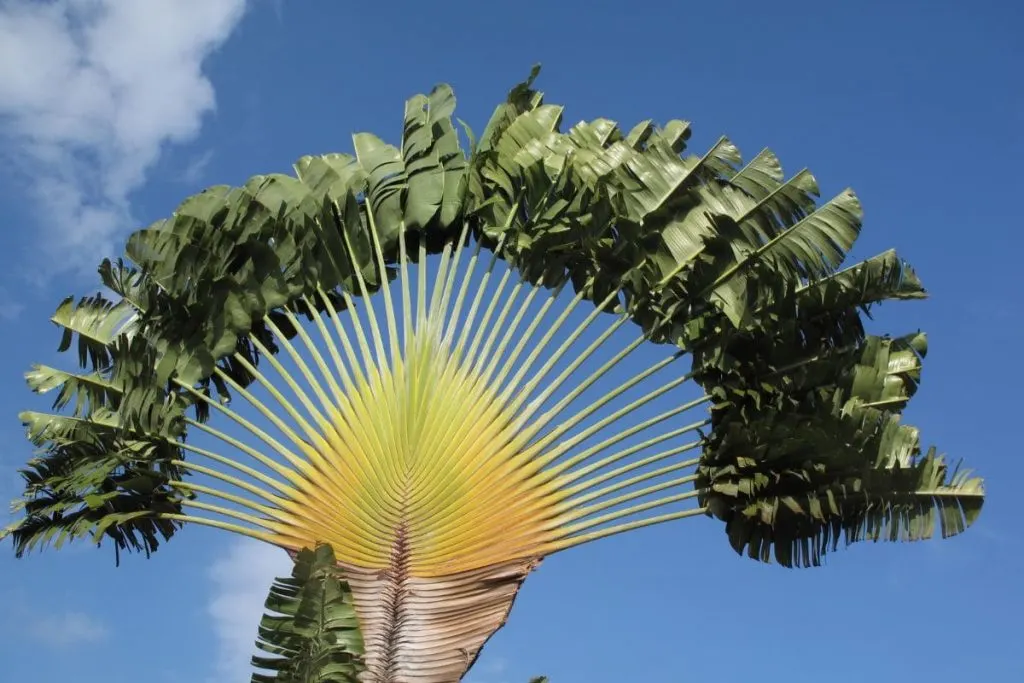
If you wanted to learn more about the traveler’s palm before you plant it, we’re here to offer you all the information you need.
Learning its care guide is important but it is also important to know the growing habitats and botanical features of this palm as well.
So, before digging into its root suckers’ habits, watering schedule, and everything else, let’s see why is this plant so interesting.
- Native habitat: Madagascar
- Family: Strelitziaceae family
- Subfamily: Ravenala
- Botanic name: scientific name ravenala madagascariensis
- Common names: banana tree, travelers palm, travelers tree, east-west palm,
- Leaf stalks/color/shape: huge leaves sprouting, big leaves indoor plants, showing east-west direction, leaf stalk is thick, leaf bases create an overlapping pattern, fan-shaped
- Flowers’ color and shape: boat-shaped spathes, light brown to yellow growing on long stems
- Hardy zone: 10 and 11
- Toxicity: mildly toxic to humans and animals, the seed oil is actually antiseptic
- Wildlife: hummingbirds, bees, birds, insects
- Growth type: the moderate pace of growth rate,
- Use: landscape plant, indoor plant
- Where to plant: in moist soil, well-aerated soil needs sun so find them a sunny spot, light shade in the afternoon, and full sun in the morning
How Tall Do Travelers Palms Get?
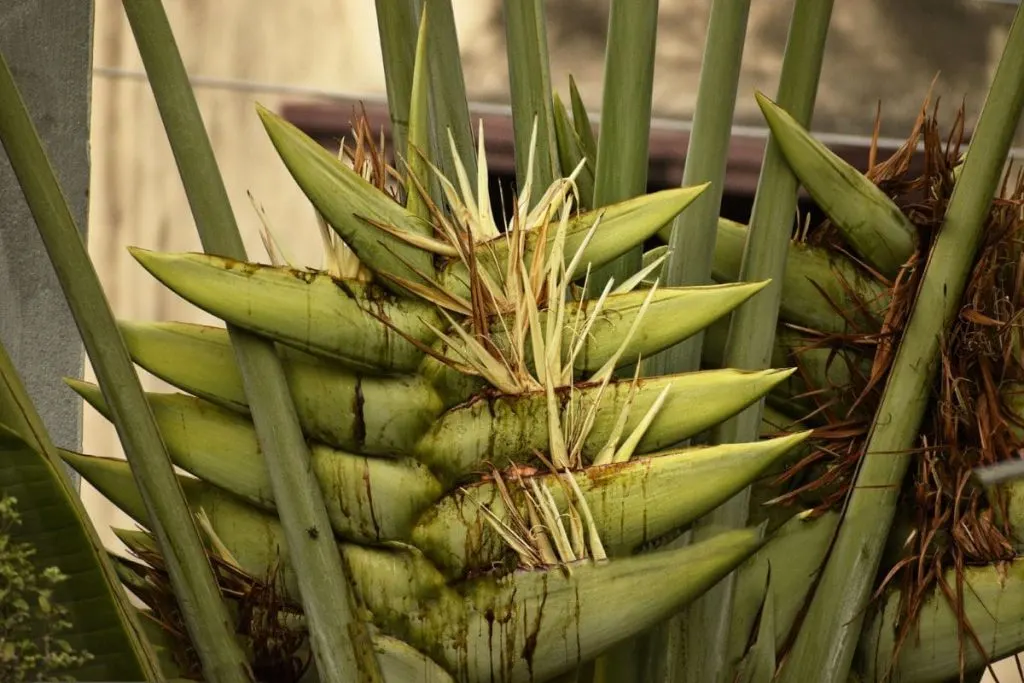
If you grow them in optimal conditions, travelers’ palms can reach 30 feet. In some areas, such as tropical regions and their naive habitat they can reach even 50 feet.
This robust, when planted directly in the ground will grow much better and taller. Sunlight and light choice in general affects a lot its height and growth in general.
How Fast Do Travelers Palms Grow?
In such conditions, they grow between 1.5 feet to 2 feet per year. What usually starts as a small plant with small leaves ends up as a big pretty-fast growing plant.
Care Guide For Traveler’s Tree: Growing Travelers Palm
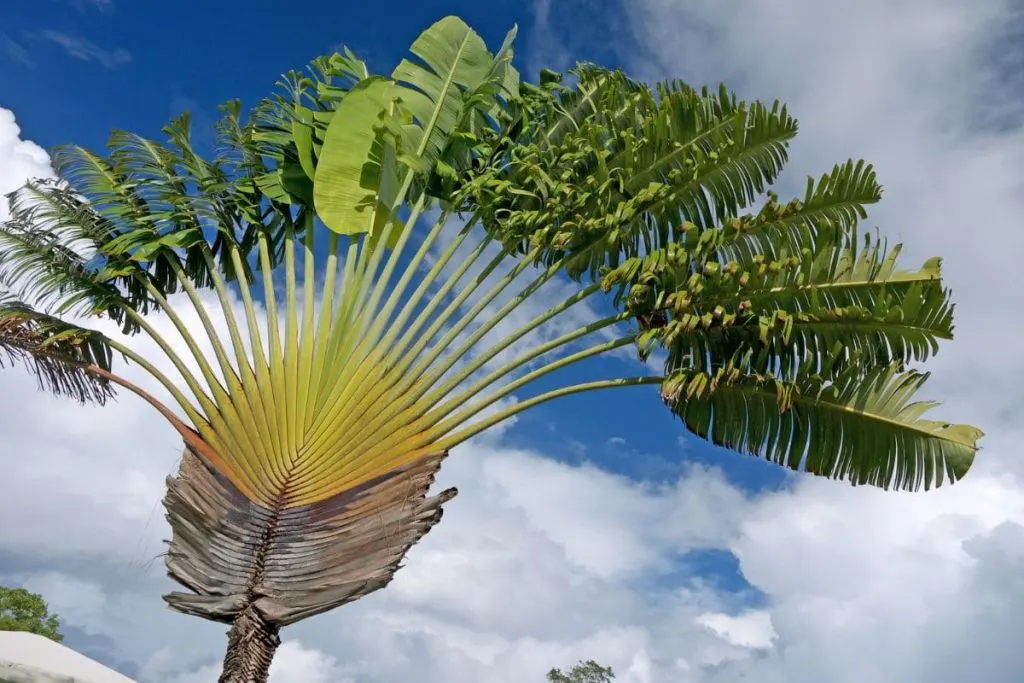
The time has come to learn your favorite plant of any plant’s article. Below we bring you a simple care guide for a traveler’s palm plant.
If you want to healthily grow this plant in your garden, you’ll find everything you need below.
Soon enough, you should have a paradise garden full of traveler’s palms. When you’re ready, you can propagate more for some new growth. Let’s check it out then.
Traveler’s Palm Light Needs
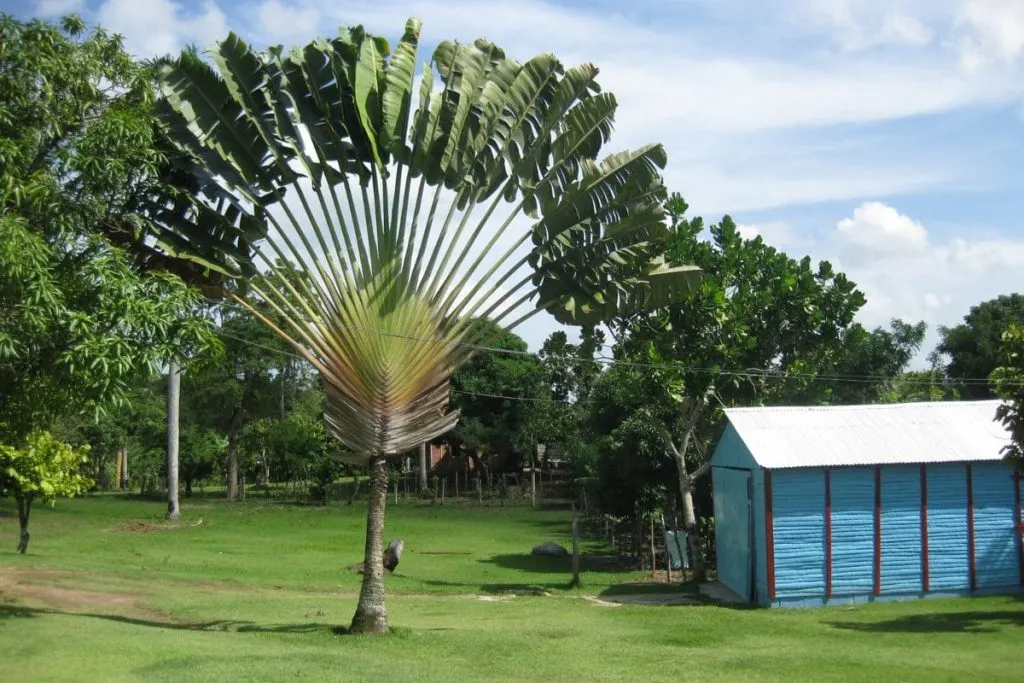
Light needs for this plant are the same as for the foxtail palm tree. But what are those light conditions? These palms can withstand very harsh conditions.
According to some stories and legends, these palm trees grew in the desert where there is nothing but them.
But as you know, it is one thing to endure and tolerate, and another to be satisfied with the conditions.
This does not mean that you should make your plant suffer. I am sure that if you decide to grow a plant, you will put effort into taking care of it.
To achieve this, you need to plant it in a location where there are many hours of sun during the day.
That would be approximately 6-7 hours of direct sunlight. After that, the palm tree can be in partial shade or even in full shade.
After 7 hours in the sun, the plant has collected enough solar energy, so the shade will not bother it. It will help the plant to rest and cool its leaves and get ready for tomorrow.
But don’t expect this from this plant. In conditions where there is no sun and where there is shade and only light all day, there is no success for this palm tree. This plant needs sun.
Watering Schedule

As we have already said in the light section for this plant. This plant is very hardy. This means that it is also one of the plants that can survive without water for a long time.
Some say that it is possible that the plant will remain the same after 20 days of not being watered.
This is not hard to believe because it really grows in extremely hot locations. In nature, no one waters them except for the rain that falls once a month or once every two months.
If you are getting ready to go on vacation, don’t be guilty of not having someone in charge of watering it. The plant will be the same when you get home.
But if you really want to give it a correct watering schedule, let it be every 8-10 days with half or a little more than half a gallon of water.
A younger plant needs less water, and a more mature plant needs more. Their roots are always bigger and need more water.
It is best to plant them in the ground precisely because of water problems such as root rot and excess water.
Similar watering conditions go for types of palm trees in California and types of palm trees in Florida. If you like this type of palm, you’ll enjoy these species as well.
Soil Type
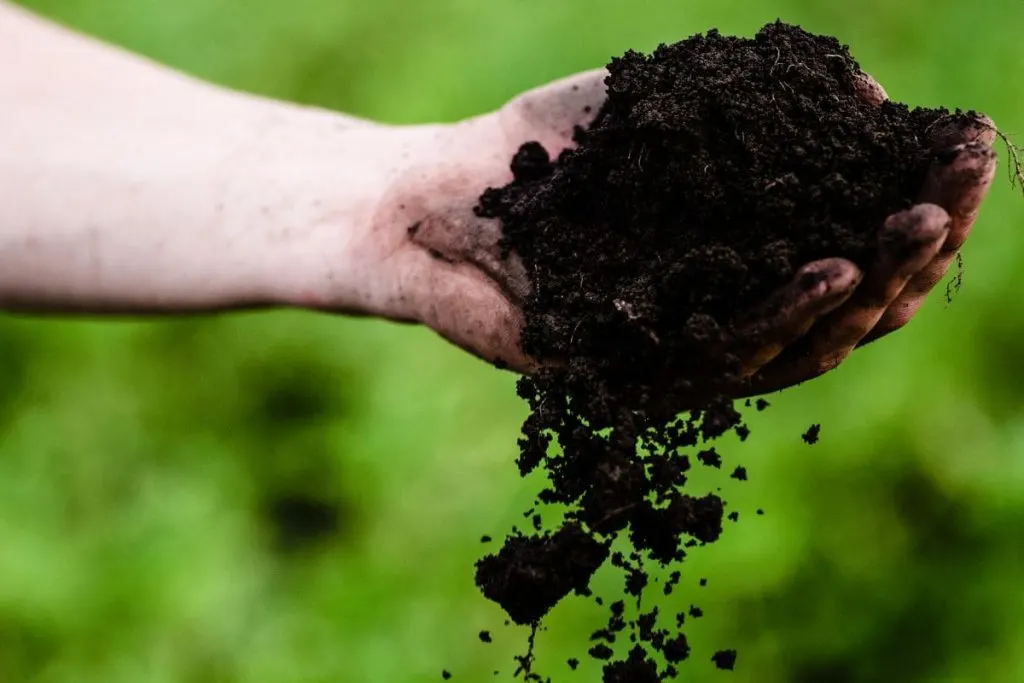
It is well known that palm trees grow best in sandy soil. You can try giving them various other soils, but if they don’t have at least a percentage of sand in that soil, it simply won’t suit them completely. They may grow, but you will not fully see their brilliant appearance.
These plants grow best in a combination of perlite soil, peat soil, and sand. In this way, the acidity of the soil is also balanced.
It should not exceed 7 of the total pH value of the soil. in that case, if the ratio is 50:50 between perlite and sand, your plant will grow beautifully and happily.
Soils that are absolutely not suitable for palm trees are black soil, ordinary soil that you will find in any garden or garden, clay, and very acidic soils.
Clay is well-draining soil and what palm trees need, but the composition of clay does not suit the palm tree the best.
Fertilizer
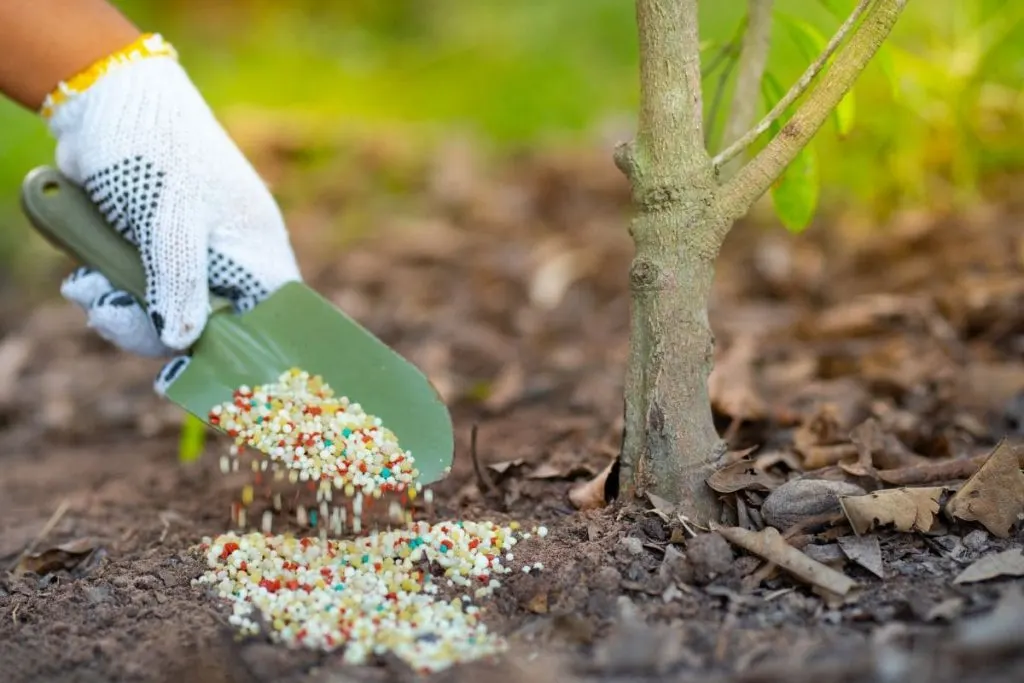
You can use several types of fertilizers for palm trees. These are classic fertilizers for palm trees, then fertilizer 16-2-6, fertilizer 15-5-10, palms food 3-2-1, palm feed 6-2-2, and many others.
Some people also use animal manure for this palm, although perhaps that fertilizer is “too strong” for this palm.
Fruiting palms are fed three times a year. In early spring, early summer, and late summer. The end of summer doesn’t have to be, so you can skip that third out if you want.
Do not feed them during the period when they do not produce flowers and fruits, i.e. autumn and winter.
If the fertilizers are strong, for example, 16-2-6 fertilizer, dilute it with water and fertilize the plant. You can apply the rest to the soil of the plant itself.
Why are palm trees fertilized at all? After a while, the strong sun will exhaust your palm so it will need a little help to keep growing healthy. Then a well-chosen fertilizer for these plants comes to the rescue.
The palm tree benefits from moderate doses of magnesium and iron. These two supplements prevent the formation of yellow spots on the leaves and help them stay green and beautiful.
Therefore, always pay attention to the composition of micronutrients and fertilizers such as magnesium and iron. That way you will definitely avoid problems with the leaves.
Humidity
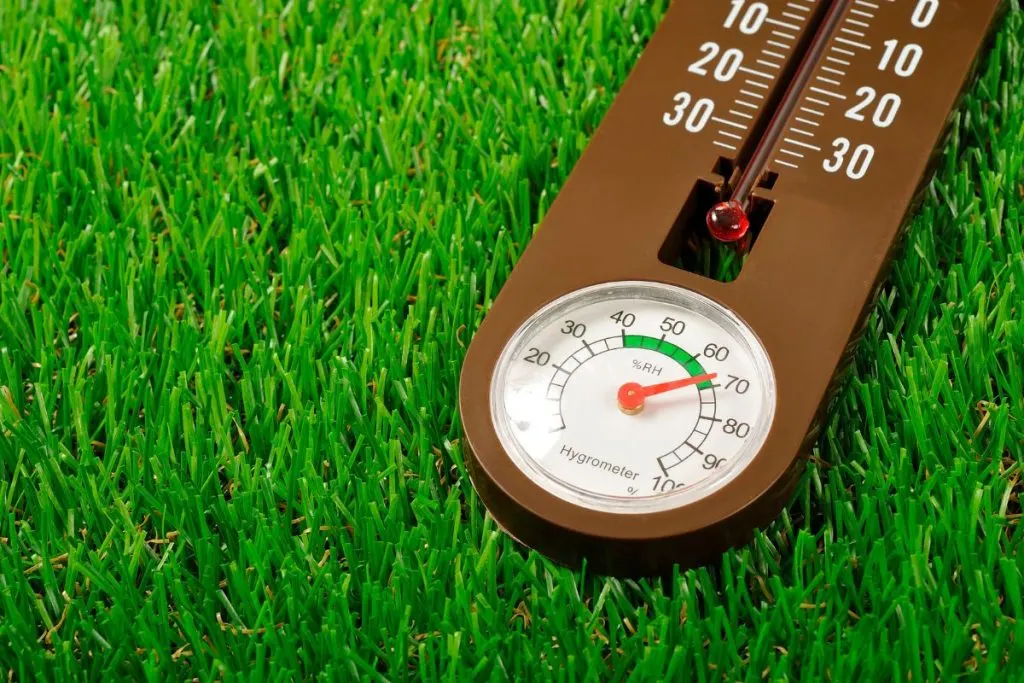
Air humidity is not so important for palm trees. They mostly grow in tropical regions, where air humidity is up to 70%. However, you will find palm trees in deserts, where the air is very very dry all year round, all day long.
But this species likes moderate air humidity. That is about 50%. That’s why it thrives in growth zones 9-10. These are precisely the zones with that average air humidity.
If you grow it indoors from the beginning, be careful, the plant may struggle with the air conditioning. It dries out the air a lot and can lead to the yellowing of the leaves.
Temperature

This is something universal for all palm trees. All palm trees ever like higher and warmer temperatures. Palm trees that grow in “colder regions” are palm trees whose ultimate “cold” temperature limit is 50 F.
Which is again not that low compared to some regions. Palm trees simply need warmth and sun to grow. If they tolerate the cold well, it means that in that region you have a change of 4 seasons.
They had a good period of summer, and flowering, and are now ready for vacation. So do not expect this and any other palm tree to grow where there is frost and snow. That is simply impossible.
Pruning
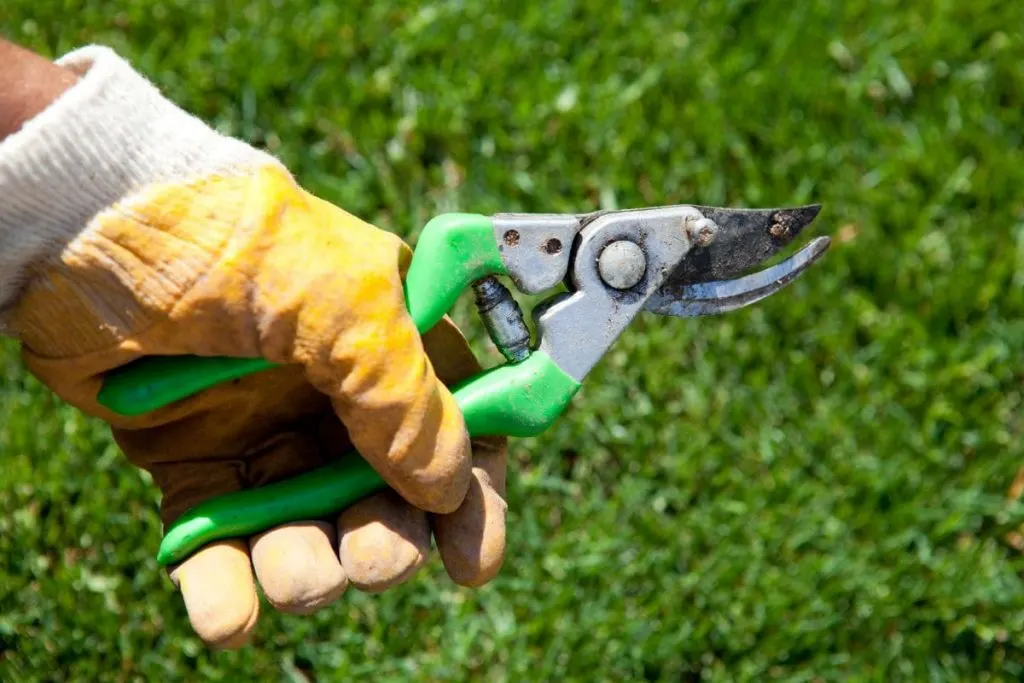
Damage to the palm tree may occur at some point. This usually happens due to too much sun. The leaves will turn yellow and need to be trimmed. It is necessary that dead fronds and old fruit stems are.
In this way, you give the old fruit stems a chance to bear good fruit the following year. When the fronds turn brown, only then should you cut them.
Do not accidentally cut green fronds. Then you are harming your plant, not benefiting it.
Wait until all fronds are brown before the pruning process. Palm leaves are slippery and specific, so we recommend scissors for them instead of a knife. Cut at an angle of 45-50 degrees for the best cutting success.
Propagation Of Travelers Palm
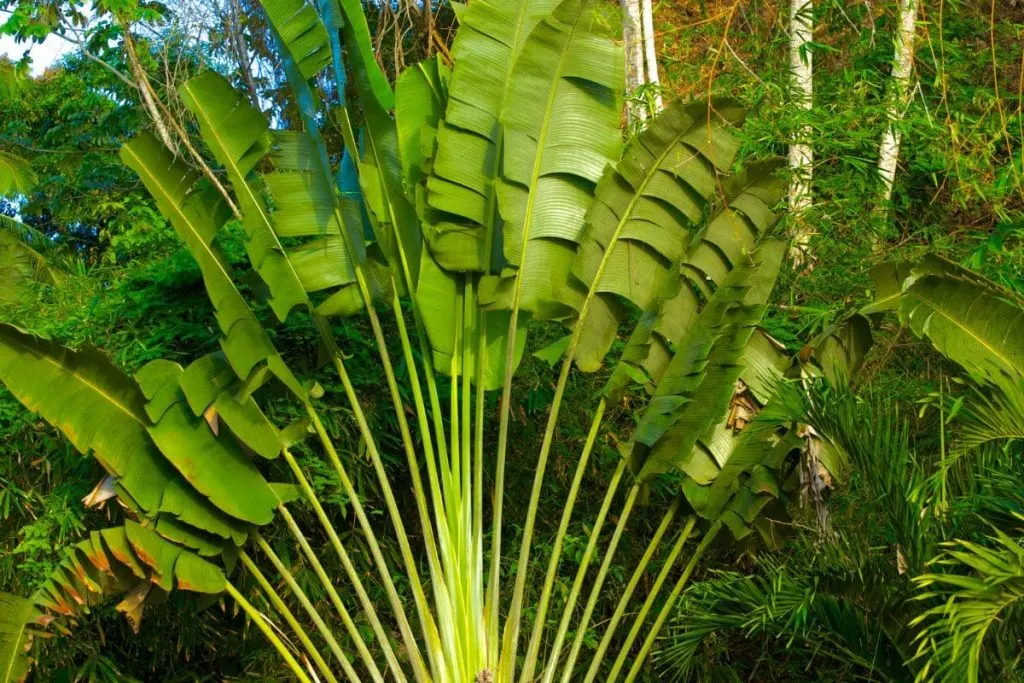
Travelers’ palms can be propagated in 2 different ways: by dividing rooted suckers and seeds. How to do these processes, let’s check out below.
- Propagating from seeds. The best way to propagate this plant using seeds is to soak them in water before sowing. Let it be 24-12 hours in the water. Prepare the land, i.e. the substrate in which you will plant the palm tree. We advise that it be directly in the ground instead of in a container for plants. In this way, the plant does not even suffer transplant shock and immediately gets more advantages for success. Fertilize the soil and water it, then cover it with some foil until it starts to germinate. After the first signs of germination, remove the foil. Your plant will now grow smoothly if you follow all the steps of the care guide above.
- Propagation with rooted suckers. If your tree goes through some kind of forest, then the so-called rooted suckers will appear. However, they are an excellent opportunity to get a new plant. Take care of the old one in the meantime, and carefully separate this one from the rest of the roots and move it somewhere nearby. That way you get two palm trees.
Story Time: Why Do They Call It Travelers Palm?
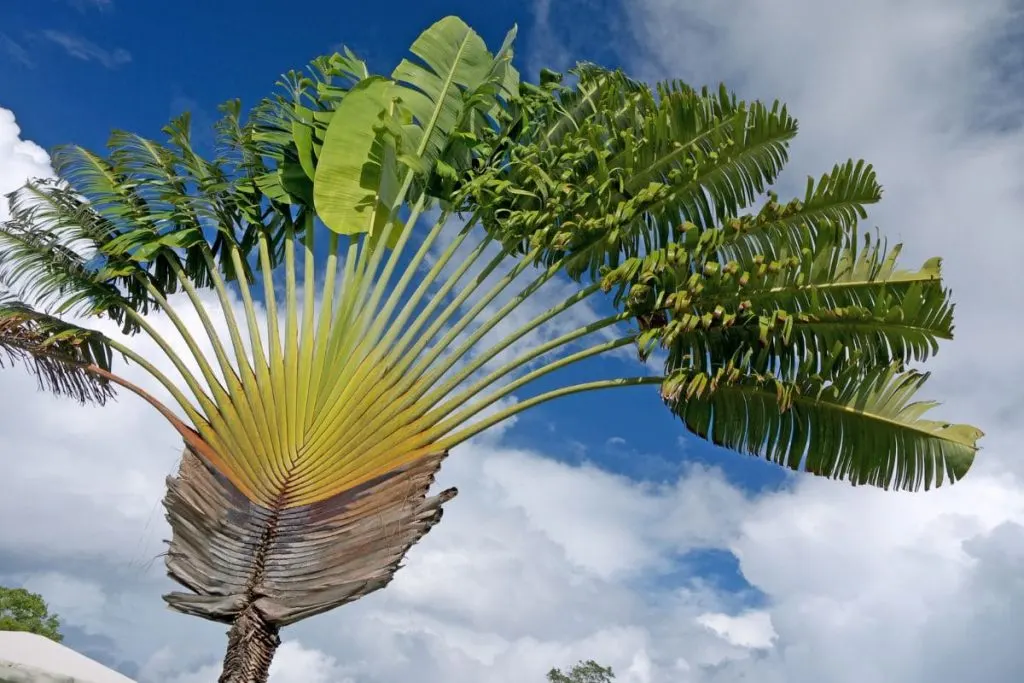
There is a story about why these plants got this name. As far as we’ve heard, it is true. You know very well how the palm stems contain a lot of water.
Thirsty travelers would run out of water while traveling and they would need an emergency drinking supply. What is a better way to drink water in nature than from a palm?
Its stems are disease resistant and especially in the active growing season, they contain a lot of water. They would dig a hole in the stem and drink the water from it. You’re maybe wondering, what about toxins and pests?
The plant is a bit toxic to humans and pets, but not like this. Its water isn’t toxic. It is also pest resistant, so worrying about pests you might’ve swallowed shouldn’t be your concern. My resume is that a parched traveler can make a hole in the palm stem and simply drink water from it.
Wrapping Up About Travelers Palm
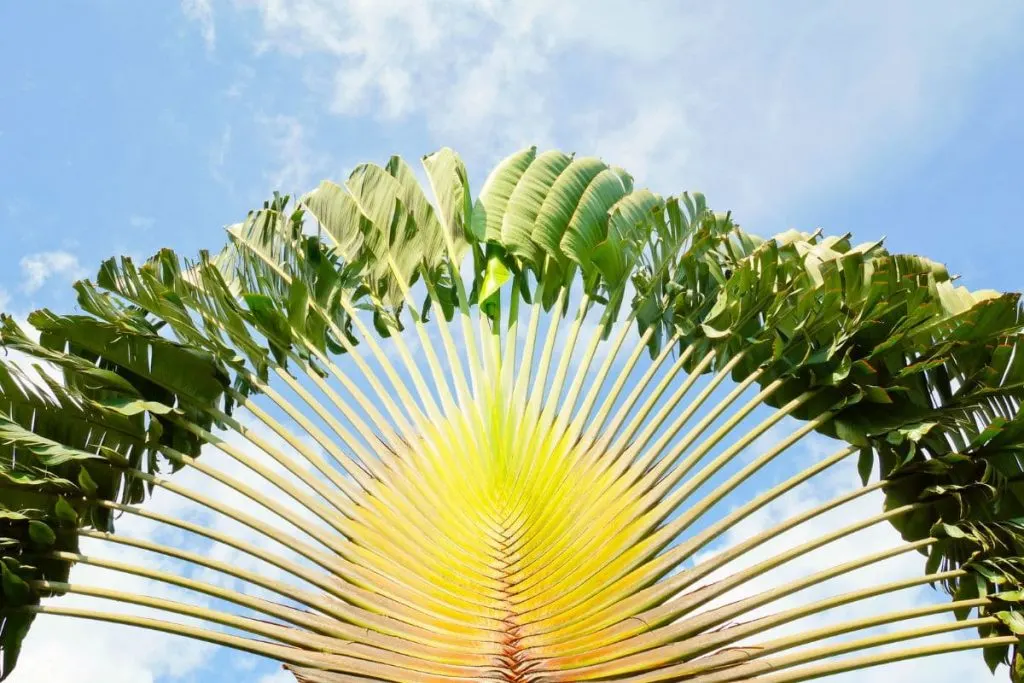
I have several reasons to believe you will get a travelers palm for your yard. Their beautiful appearance, interesting story and uniqueness of this palm, and then the simplicity of its care guide. Am I right?
Shall we resume it all once again so we make sure you got it all right? Choose a standard potting mix for your traveler’s palm.
Protect your plant from the high winds. Water them with fresh water or rainwater. Since pest issues don’t usually appear, if they do, check out the cause, you’re doing something wrong. Propagate from the seeds you got from a flower.
That would be all for today, enjoy planting! Good luck. See you tomorrow!

